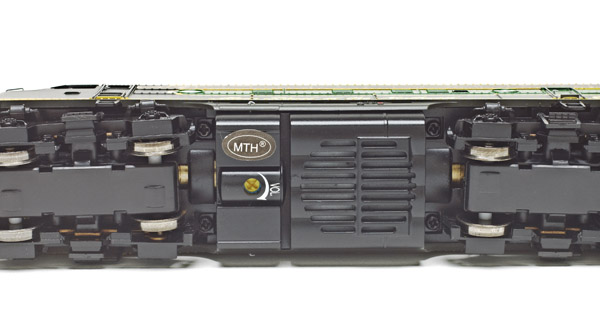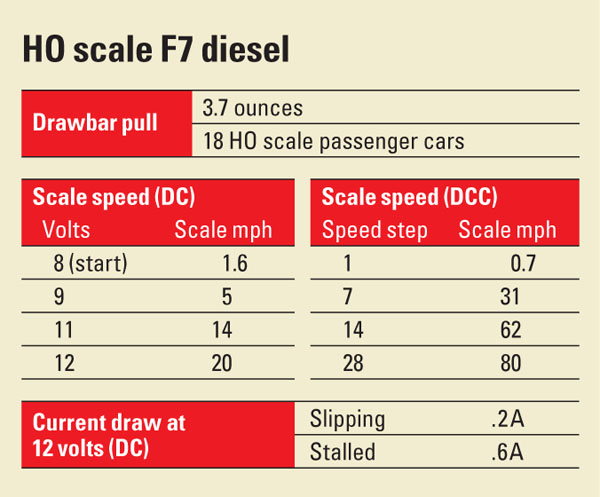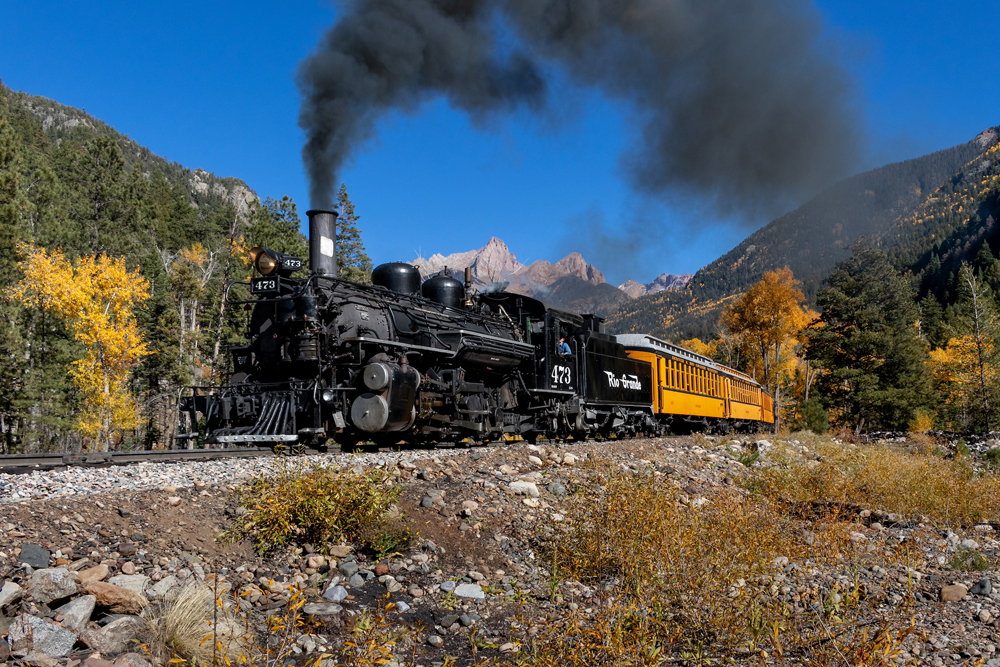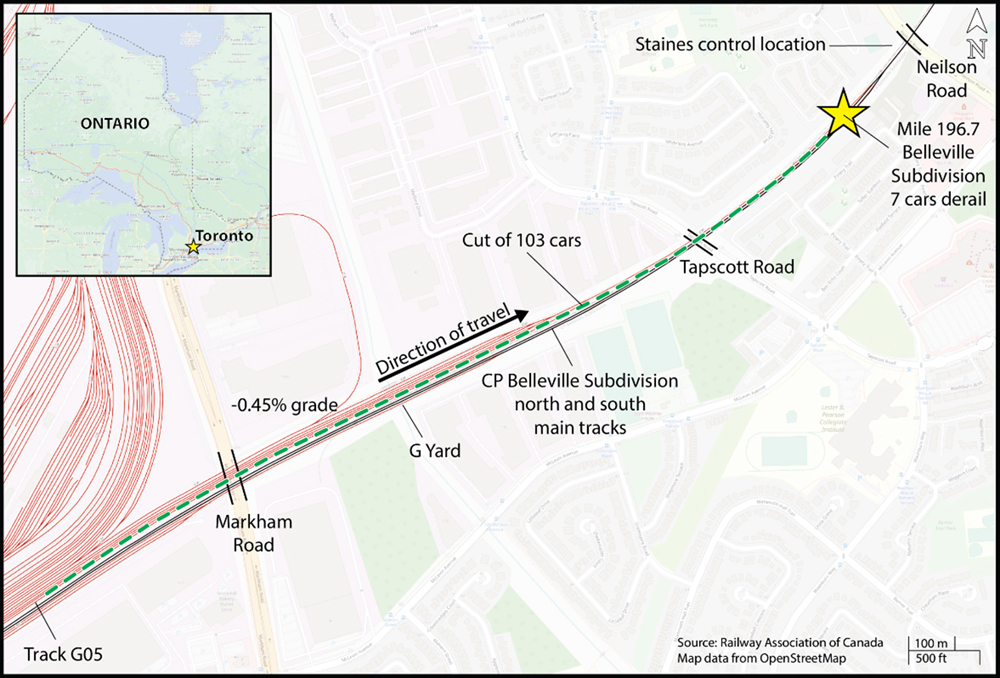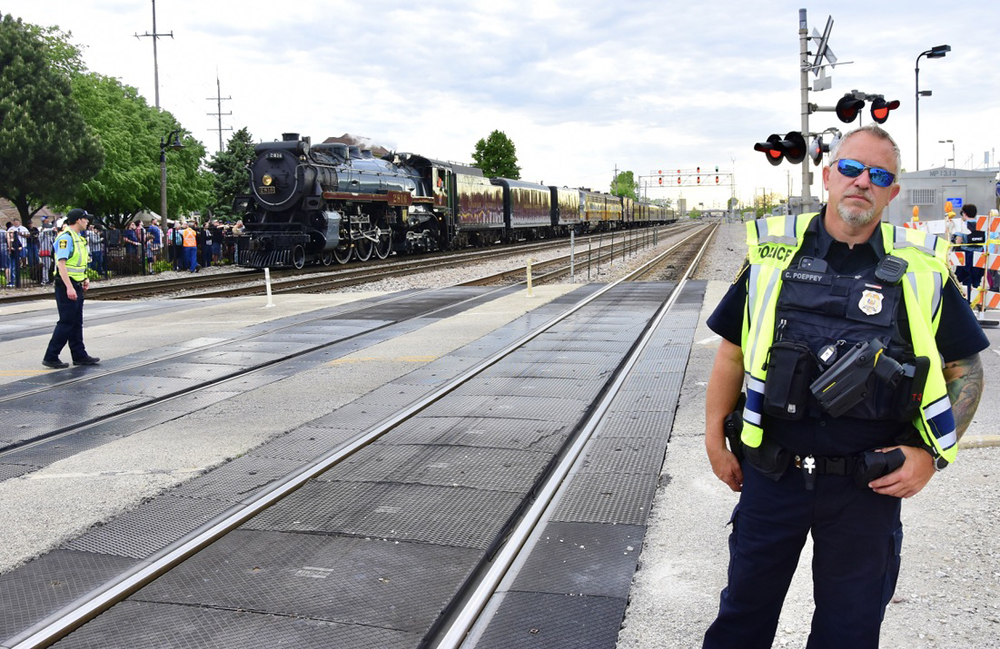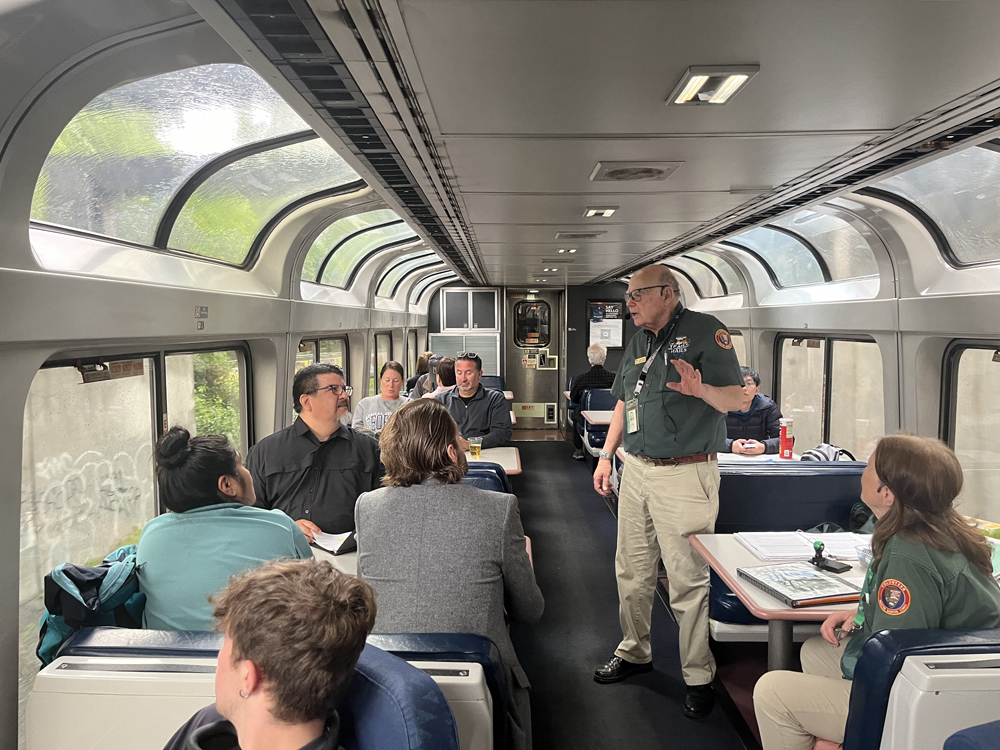The prototype. General Motors’ Electro-Motive Division introduced the F7 as a successor to the firm’s F3 diesel-electric locomotive. Both locomotives used 1,500 hp 567B engines, but the F7’s improved traction motors boosted its tonnage rating by 30 percent over the F3. Electro-Motive built more than 3,800 F7s between 1948 and 1953, making the F7 the most popular F unit of all time.
The Northern Pacific Ry. received 45 F7A and 34 F7B units starting in 1949. The locomotives hauled some of the railroad’s signature streamlined trains, including the North Coast Limited and the Mainstreeter. As on other railroads, F7s had long careers on the NP, and a few went on to haul Amtrak trains through the early 1970s. Some NP F7As and F7Bs lasted until late 1981, serving on the Burlington Northern RR.
The MTH F7 is accurately detailed for a Phase I F7. Railfans and modelers use this term to designate an F7 built between November 1948 to November 1951. F7s built after that date are referred to as Phase II. Spotting features for a Phase I F7 include a 36″ diameter dynamic brake fan, roof overhang on the rear of the F7A, and horizontal louvers on the sides.
Separate parts on the model include horizontal-slit Farr air-intake grills, which are correct for a Phase I F7. These parts are made of etched-metal for a realistic see-through effect.
The model is decorated in the prototype’s as-delivered paint scheme. The striping is neatly applied and the lettering is straight. Oval EMD builder’s plates are printed on each side of the cab.
I also ran the model with a Model Rectifier Corp. Prodigy Advance DCC system and a MTH DCS Digital Commander. In both cases the model crept smoothly at .7 scale mph in speed step 1 and accelerated to 80 scale mph.
I was very impressed by the F7’s pulling power. A single F7A has enough power to haul a full HO passenger consist on straight and level track. The locomotive is also a powerful hill climber. It hauled a consist of seven scale 80-foot passenger cars up a 3 percent grade without slipping.
On DC layouts the sound effects are limited to the engine sounds, which are a credible recording of an EMD 567 diesel. When not in motion, random crew dialogue can also be heard. A sudden direction change or decrease in the throttle will trigger squealing brakes.
There are more user-triggered sound effects available when running the model with a DCC or DCS system. Sound effects include air horn signals, manual notching of the engine sounds, a bell, and a passenger arrival/departure sequence. This latter effect depicts the Mainstreeter at the beginning of the train’s Seattle to Chicago run.
I tested the 28 user-triggered functions in DCC and DCS. The remote-opening couplers operated reliably with an appropriate sound effect. Function 0 turned on the headlight and Mars light, while function 5 controlled the lighted number boxes and green classification lights. (Green class lights denote a scheduled train with an additional section following on the same schedule).
DCC programming. I appreciated that MTH includes a useful DCC section in its instruction manual. There’s a full list of supported configuration variables (CVs), including starting voltage, acceleration and deceleration, and setting the long address.
To work better with the throttles on our layout, I reassigned the manual notching feature to function keys 6 and 9. (Function 6 normally controls the master volume remotely, and function 9 sounds an automatic forward horn signal. I figured I could just as easily set the volume with the knob under the fuel tank, and I enjoy manually sounding horn signals.)
I advance consisted the A and B unit and selected which features that I wanted to control under the consist address using CVs 21 and 22. For example programming these CVs helped make sure that I only triggered the B unit’s rear coupler when I hit F8.
I also easily ran, triggered sound effects, and programmed the locomotives with the DCS throttle.
The MTH F7 has many realistic sound effects, and its powerful mechanism will make sure HO scale passengers get to the station on time.
Manufacturer
MTH Electric Trains
7020 Columbia Gateway Dr.
Columbia, MD 21046
mthhotrains.com
Road names: Northern Pacific, Atchison, Topeka & Santa Fe (red or yellow warbonnet); Chesapeake & Ohio; Erie-Lackawanna; Western Maryland
Era: 1948 to 1980s
Features
- All-wheel drive and electrical pickup
- Die-cast metal chassis
- Digital Command System with ProtoSound 3.0 operates on DC, DCC, and DCS layouts (DCS version only)
- Eight-pin DCC socket (DC version)
- Five-pole skew-wound flywheel-equipped motor (A and B units)
- Light-emitting diode (LED) headlight, Mars light, class lights, and number boxes
- Minimum radius: 22″
- Painted engineer and fireman figures in A unit
- Remote-opening knuckle couplers at correct height (DCS version only)
- RP-25 contour metal wheels in gauge
- User-installed Kadee-compatible knuckle couplers
- Weight: 1 pound 1 ounce (A unit), 1 pound 3 ounces (B unit)







